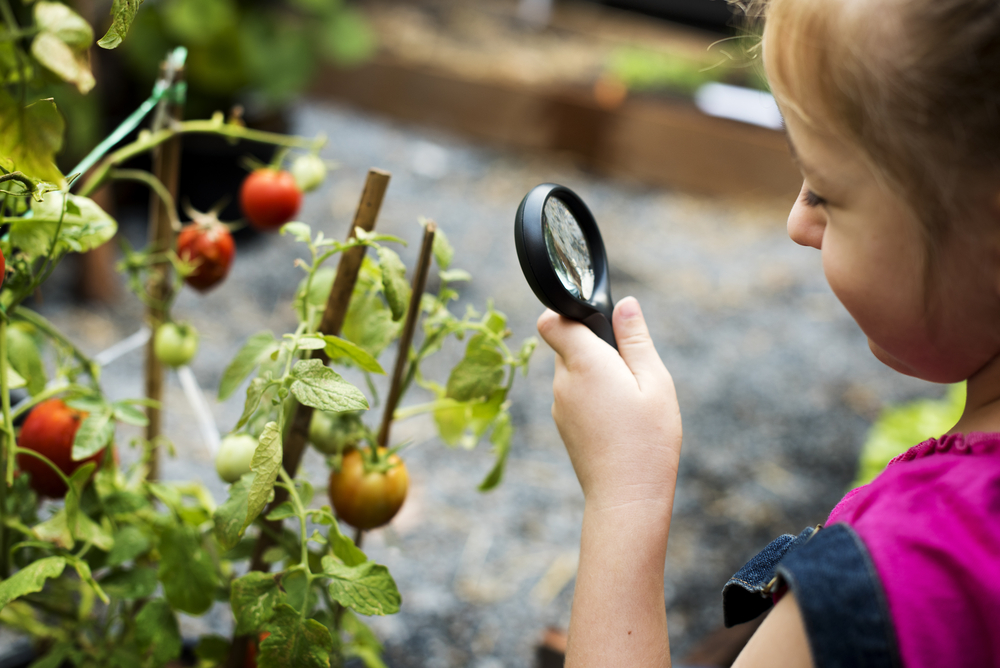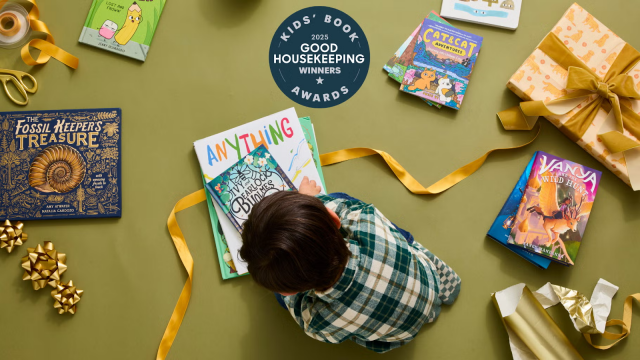Adding Food Sources to Your School Habitat
- May 10, 2023
- By Christy Peterson
Schoolyard Habitat
 Habitat is simply a place where a plant or animal lives. When we talk about creating habitat for wildlife, we talk about providing the four things an animal needs to thrive: food, water, shelter, and places to raise young. In this article, we will focus on the process of adding food sources to your habitat garden.*
Habitat is simply a place where a plant or animal lives. When we talk about creating habitat for wildlife, we talk about providing the four things an animal needs to thrive: food, water, shelter, and places to raise young. In this article, we will focus on the process of adding food sources to your habitat garden.*
#1: Plant Something!
Since plants form the base of the food chain, any effort to add more plants and a greater diversity of plants to your campus will provide food for the next level in the food web. Any schoolyard garden, from a large, long-term, permanent planting to a container garden on the sidewalk outside your classroom, will provide habitat. You can even mark out an area of the playground and just let the grass grow.
To make your garden the best habitat it can be, plant densely (while still leaving room for plants to get bigger). This gives all the creatures you’re trying to attract good places to hide. Plant tall, medium, and short plants, again to give a variety of hiding places. Also, consider that planting blocks of certain plants, particularly those that will attract pollinators like bees and butterflies, is more effective than planting single specimens.
When selecting plants for your garden, choose (mostly) flowers, shrubs, and trees that are native to your area. Why? Native plants have adapted over time to the climate and soil conditions of your region. Together with native animals, they form a community. Another bonus is that, once established (every planting needs a little babying at the beginning), natives typically require less maintenance than nonnatives. (See end of the article for native plant sources and teacher resources.)
#2: Build a Compost Pile
Another idea to consider is a compost pile. Plants form the basis of this habitat as well, this time in the form of decomposing material. Compost piles attract a different, but no less fascinating, “web” of life than flower gardens. A compost pile can be as simple as a pile of grass clippings, thinned seedlings, and trimmings in the corner of a garden, but for a schoolyard setting, tidier containment is probably more appropriate. You can build a classic compost bin with wooden sides, buy a plastic compost container or tumbler, or even use straw bales to contain your pile. (See end of the article for links.)
#3: Put Out a Welcome Mat for Bugs
We are conditioned to see insect damage to plants as bad, but if you start seeing little holes in your carefully planned and planted garden, you will know you’ve successfully attracted the second link in the food chain. Primary consumers usually come in the form of invertebrates, except for a few rascally “wabbits,” deer, and other furry herbivores. Resist the urge to run to your nearest home center for insecticide and welcome the little munchers. These animals are the bridge between the plants and every other link on the food chain. They are indispensable and should be appreciated as such. If you do have a true imbalance (e.g., the aphids are taking over a newly-planted shrub) use the least-toxic intervention possible to avoid killing other invertebrates.
#4: Host the Eaters of the Eaters
I’m cheating a little with #4. The truth is, if you’ve accomplished Steps 1-3, Step 4 will happen without much effort on your part. A vibrant garden full of bugs will be a magnet for the next link in the food chain—the secondary consumers. They are the guys whose job it is to make sure the plant eaters don’t get out of control. Wasps, spiders, birds, bats, and frogs are a few of the fascinating creatures that you may begin to see hanging around your little habitat patch. Personally, I could watch a crab spider waiting to spring on an unsuspecting bee or a mason wasp stuffing her nest with paralyzed spiders for hours. I’m betting your students will find them pretty interesting as well.
#5: Offer Supplementary Feeders
The natural food cycle is the best, most healthy way to offer food to wildlife. That said, feeders are a wonderful tool and offer opportunities for wildlife viewing not afforded by other projects. There are so many permutations of bird feeders that I don’t have space to list them all here, but a simple platform feeder in a garden space or a hanging feeder near a classroom window is a good place to start. Late spring to early autumn is a good time to put out fruit for butterflies. Be sure to keep your feeders clean; animals acquire diseases from messy feeding areas just as people do. (Resources at the end of the article.)
Most schoolyards are fairly barren places, with large swaths of grass and blacktop and the occasional tree. Whether you embark on a huge, multi-year habitat project or set out with small, baby steps, you will inevitably see increases in species diversity. This variety will create a richer learning environment for you and your students.
*My standard disclaimer—each district has different procedures, so you’ll have to take on the permission process on your own (sorry about that).
Resources—Native Plants
Finding Native Plant Sources: http://findnativeplants.com/
Native Wildflower Mixes: http://www.xerces.org/pollinator-seed/ and http://www.seedsource.com/
Teacher Resources: https://www.wildflower.org/teachers/
Resources—Compost Piles
Build Your Own Compost Bin: http://www.organicgardening.com/learn-and-grow/ultimate-compost-bin
Buy a Bin: Check with your local Extension office for sources.
Resources—Feeders
Butterfly Feeders: http://www.hometrainingtools.com/a/butterfly-feeder-project
Schoolyard Feeding Stations: http://www.birdsource.org/gbbc/learning/for-educators/schoolyard-feeding-stations
Resources—Schoolyard Habitats, General
National Wildlife Federation: USFWS Schoolyard Habitat Project Guide: http://www.fws.gov/cno/pdf/HabitatGuideColor.pdf
Kids Discover Kids Discover Online Schoolyard Habitat

Kids Discover Talks with Book Editor Karen Cicero about Good Housekeeping’s 2025 Kids’ Book Awards
- December 22, 2025

Kids Discover Talks with Television Lighting Designer Christopher Landy About the Rockefeller Center Christmas Tree Lighting
- December 9, 2025

It’s the Most Wonderful Time of the Year… For Community Service Projects!
- December 8, 2025